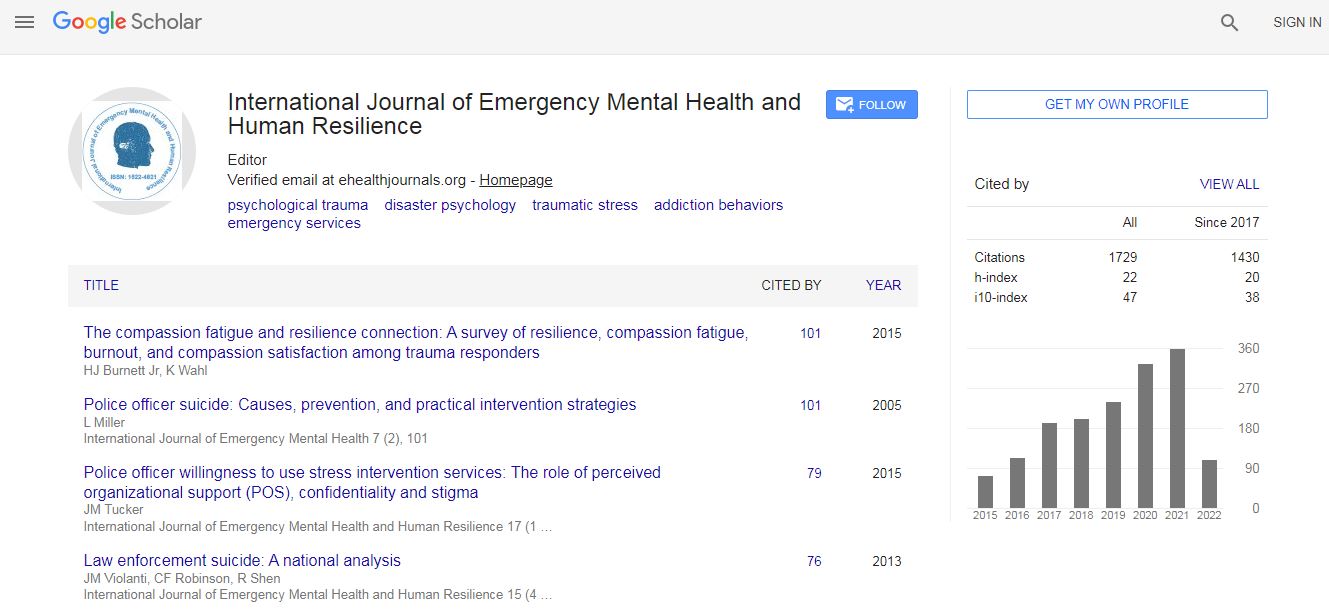Our Group organises 3000+ Global Conferenceseries Events every year across USA, Europe & Asia with support from 1000 more scientific Societies and Publishes 700+ Open Access Journals which contains over 50000 eminent personalities, reputed scientists as editorial board members.
Open Access Journals gaining more Readers and Citations
700 Journals and 15,000,000 Readers Each Journal is getting 25,000+ Readers
Google Scholar citation report
Citations : 4948
Indexed In
- Index Copernicus
- Google Scholar
- CiteFactor
- Publons
- Pubmed
- science Gate
- scispace
- world cat
Useful Links
Related Subjects
Share This Page
The Relation of Nonverbal Synchrony and Therapeutic Alliance Ruptures
6th World Congress on Mental Health, Psychiatry and Wellbeing
Jack Trevor Friedman, Jeremy Safran, Jerzy Kaufmann, Howard Steele, Miriam Steele
The New School for Social Research, USA
Posters & Accepted Abstracts: Int J Emerg Ment Health
Abstract
The study of nonverbal synchrony examines the degree to which individuals’ nonverbal cues, such as body movement, coordinate in time. Within the psychotherapeutic dyad, nonverbal synchrony has been shown to correlate with therapeutic alliance and outcome (Ramseyer & Tschacher, 2011). However, nonverbal synchrony research has yet to address ruptures in the therapeutic alliance. To address this gap, the present study analyzed an archive of client-therapist video-films comprising 118 fifty-minute sessions that were collected in the early 1990s and subjected to rigorous study by Jeremy Safran and his research students. The naturalistic sample consisted of 14 therapist-patient dyads, who completed 12 sessions (6 weeks of relational psychodynamic therapy and 6 weeks of cognitive behavioral therapy). 118 sessions were included, as some were omitted due to quality. Patients and therapists provided self-reports of rupture frequency, intensity and resolution, after each session. Nonverbal synchrony values were computed using a software program called Motion Energy Analysis (MEA), which quantifies bodily motion by tracking frame-to-frame pixel changes. Results showed that there was no significant correlation between MEA synchrony and rupture frequency or intensity. However, when patients perceived a rupture in a session (n=20), synchrony correlated negatively with perceptions that the rupture was resolved, r = -.572, p=.005. Low and moderate synchrony was, in other words, linked up with patients’ reporting the rupture was resolved.Biography
E-mail: friej594@newschool.edu

 Spanish
Spanish  Chinese
Chinese  Russian
Russian  German
German  French
French  Japanese
Japanese  Portuguese
Portuguese  Hindi
Hindi 